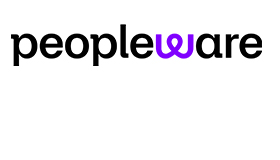Introduction
Traditional time-off management is full of inefficiencies, uncertainty, and stress. Outdated methods like email chains and spreadsheets can contribute to a work culture that is not transparent and is conflict prone and stressful for both employees and managers.
As a result this can negatively impact employee morale, productivity, and business results. Furthermore, planners struggle with managing various types of time off, adapting to last-minute changes, often across multiple departments.
However, not all is lost. There is a better way. Through decision-making automation and embracing flexibility, time-off management can be transformed from a stressful process into a system that empowers individuals to prioritize well-being without compromising business success.
In this blog post, we explore why time-off management is so hard to get right and the potential for a new approach.
Why Does Traditional Time-Off Management Suck?
In a lot of cases, the process of managing time off relies on outdated methods such as extensive email communication, spreadsheets, or even paper forms.
These types of archaic approaches usually lead to significant problems such as tension between managers and employees, time-consuming administration, or numerous rounds of approvals.
This cumbersome and inefficient process creates a culture where taking time off is seen as a source of conflict rather than a way for personal well-being and work-life balance.
It fosters anxiety and fear among employees, inhibiting their ability to fully relax and recharge during their time away. The negative impact on employee morale and overall productivity can be considered significant.
The Tough Job of a Planner
Planners have a tough job and time-off management can feel like one of the biggest tasks to tackle. Solely the sheer number of different types of time off can be overwhelming.
Some contact centres have more than 200 variations, including vacation days, personal days, golden days, sick leave, and many other categories.
This can make it increasingly difficult for planners to keep track of and accurately compute the impact on staffing. Each type of time off comes with its own set of rules and regulations, further complicating the process.
Furthermore, the nature of fast-paced operations in organizations like contact centres often leads to last-minute changes, making it nearly impossible to organize time off efficiently.
Unexpected events, fluctuations in call volumes, and unforeseen circumstances constantly disrupt the planned schedules, forcing planners to constantly adapt and adjust staffing levels on the fly.
This reactive approach adds stress to both the planners and the employees, resulting in a lack of clarity and certainty surrounding time-off requests.
Moreover, employees may find themselves in a frustrating predicament where they have earned days off but are unable to use them before they expire.
The challenge lies in finding overlapping periods with other employees in the department or balancing workload demands during peak periods. This imbalance not only leads to unutilized time off but also contributes to employee dissatisfaction and burnout.
A New Approach to Time Off Is Possible
There is good news though! And that is that time-off management doesn’t have to be like this! It is possible to transform time-off management into a system that harmonizes work and personal life, empowering individuals to prioritize well-being without compromising team success or business goals.
The first step towards creating a better time-off management system is to automate the decision-making process. Relying on manual approvals and paper-based systems is not only time-consuming but also prone to errors and inconsistencies.
By implementing an automated system, contact centres can streamline the process, reduce administrative burdens, and eliminate the need for subjective decision-making. This empowers employees to request time off with confidence, knowing that the process is fair, transparent, and efficient.
Flexibility is another crucial element in modern time off management. Different types of time off require different considerations.
Whether it’s vacation days, personal leave, or medical absences, a one-size-fits-all approach simply doesn’t cut it. To create a culture where time off is celebrated, we must ensure that our workforce management plans have the necessary flexibility to accommodate various types of time off.
This includes accounting for different lengths of absences, understanding peak periods, and effectively redistributing workloads among team members.
The Takeaway
Traditional time-off management is burdened by inefficiencies, conflicts, and stress. However, there is hope!
By embracing automation and flexibility, organizations can revolutionize time-off management, transforming it into a system that empowers employees and fosters a culture of work-life balance.
This blog post has been re-published by kind permission of Peopleware – View the Original Article
For more information about Peopleware - visit the Peopleware Website
Call Centre Helper is not responsible for the content of these guest blog posts. The opinions expressed in this article are those of the author, and do not necessarily reflect those of Call Centre Helper.
Author: Peopleware
Published On: 1st Jun 2023
Read more about - Guest Blogs, Peopleware






 Peopleware is a leading workforce management (WFM) solution, trusted by over 500,000 users in 30+ countries. With smart forecasting, automated scheduling and real-time management, organizations can optimize workforce efficiency and keep work aligned with demand. From precise time tracking to flexible planning, Peopleware helps organizations boost operational efficiency and foster a more engaged, productive workforce.
Peopleware is a leading workforce management (WFM) solution, trusted by over 500,000 users in 30+ countries. With smart forecasting, automated scheduling and real-time management, organizations can optimize workforce efficiency and keep work aligned with demand. From precise time tracking to flexible planning, Peopleware helps organizations boost operational efficiency and foster a more engaged, productive workforce. 









